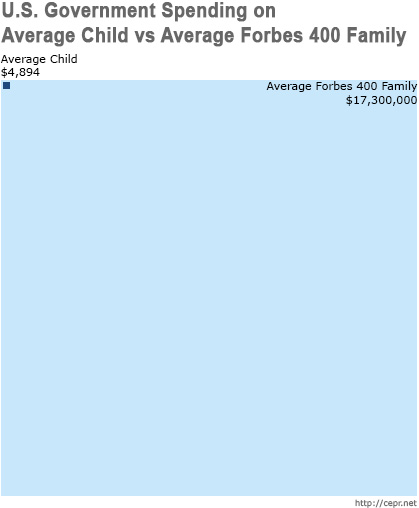October 21, 2014
It is a popular sport in policy circles to complain that the government spends so much more on seniors that it spends on kids. The gap between spending on seniors and spending on kids comes from taking average Social Security and Medicare benefits, along with some other programs, and showing that is vastly exceeds what we spend on kids. (The calculation usually leaves out state and local expenditures, which accounts for the bulk of education spending.)
The problem with this calculation is that seniors have paid for Social Security and Medicare benefits through the payroll taxes taken out of their paycheck over their working lifetime. According to calculations from the Urban Institute, the typical retiree pays more into Social Security than she can expect to get back in benefits.
There is a gap between the cost of Medicare benefits and the contributions made by a typical worker, but this is explained primarily by the excessive cost of health care in the United States. We pay more than twice as much per person for our health care as the average for other wealthy countries like Germany, Canada, and the United Kingdom. This isn’t because we get better care, but because our providers – doctors, drug companies, medical equipment companies – get paid far more in the United States than in other countries. It seems a bit strange to be upset at seniors because our doctors get exorbitant salaries, but that’s politics in Washington.
Anyhow, since the fashion is to ignore that seniors paid into Social Security and Medicare, we can play the same game with the rich. The total wealth of the Forbes 400 comes to just under $2.3 trillion or roughly 3.0 percent of total national wealth. If we assume that the Forbes 400 have divided their wealth in the same proportion as the rest of the country, it would mean that they own roughly 3.0 percent of the government debt.
The federal government is projected to pay $231 billion in interest in 2014. The Forbes 400 share of this interest would come to $6.9 billion. That translates into $17.3 million for each of the richest families in the country.
The figure below compares the $17.3 million that we spend on the Forbes 400 with the $4,894 that we spend on the average child. What sort of country has this sort of imbalance between what it spends on its richest people compared to what it spends on its kids? (We can also note the racial imbalance – the rich are mostly white – as many of the seniors versus kids types are prone to do.)

Okay, we all know that the Forbes 400 paid for their bonds, but if we live in a world where policy wonks think it makes sense to ignore the fact that seniors paid for their Social Security and Medicare benefits, then it must also make sense to ignore that the rich paid for their bonds. A little consistency should not be too much to ask for in policy debates.






